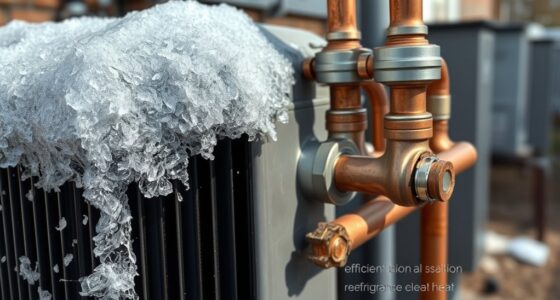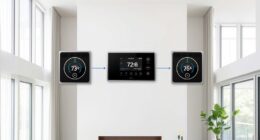We have unraveled the secrets of how energy transfers work in heat pumps.
In this article, we delve into the basics of thermal energy transfer, exploring the principles and efficiency of heat pump energy transfers.
Discover the factors that influence these transfers and the crucial role refrigerants play.
We analyze the performance and offer tips for optimizing heat pump energy transfers.

Join us as we uncover common challenges and advancements in heat pump technology, all aimed at enhancing energy transfers for the benefit of all.
Key Takeaways
- Heat pumps transfer heat from a low-temperature source to a high-temperature sink.
- Thermal conductivity, conduction, convection, and radiation are crucial principles in heat pump energy transfers.
- Factors such as choice of refrigerant, design of heat exchangers, and control algorithms impact the efficiency of heat pump systems.
- Maximizing energy transfer efficiency through insulation, regular maintenance, proper sizing, and advanced control systems is essential for improving heat pump performance.
The Basics of Heat Pump Energy Transfer
Let’s begin by understanding the basics of how heat pump energy is transferred. Understanding heat pump efficiency is crucial in exploring heat pump technology.
Heat pumps operate by transferring heat from one place to another using the principles of thermodynamics. They utilize a refrigerant that evaporates at a low temperature, absorbing heat from the surroundings. The refrigerant is then compressed, increasing its temperature and pressure.
This high-temperature refrigerant is then condensed, releasing the absorbed heat into the desired space. By utilizing this cycle of evaporation, compression, and condensation, heat pumps are able to efficiently transfer heat from a lower temperature source to a higher temperature space.

The efficiency of a heat pump is measured by its coefficient of performance (COP), which is the ratio of heat output to the amount of energy input. Understanding heat pump efficiency is essential for maximizing energy savings and reducing environmental impact.
Understanding the Principles of Thermal Energy Transfer
We can gain a deeper understanding of thermal energy transfer by examining the principles behind it. When it comes to the transfer of heat, there are a few key concepts to consider:
-
Thermal conductivity: This refers to the ability of a material to conduct heat. Materials with high thermal conductivity, such as metals, allow heat to transfer more easily.
-
Conduction: This is the process by which heat is transferred through direct contact between particles. It occurs when heat energy is transferred from one molecule to another through a solid material.

-
Convection: This is the transfer of heat through the movement of a fluid, such as air or water. It occurs when warmer particles rise and cooler particles sink, creating a continuous flow of heat transfer.
-
Radiation: This is the transfer of heat through electromagnetic waves. Unlike conduction and convection, radiation doesn’t require a medium to transfer heat.
Understanding these principles of thermal energy transfer is crucial in designing and optimizing heat pump systems. By leveraging the knowledge of thermal conductivity and the various heat transfer mechanisms, we can maximize the efficiency and effectiveness of heat pump energy transfers.
Exploring the Efficiency of Heat Pump Energy Transfers
Now let’s turn our attention to the efficiency of heat pump energy transfers. Maximizing energy transfer efficiency is crucial for improving the overall performance of heat pumps.
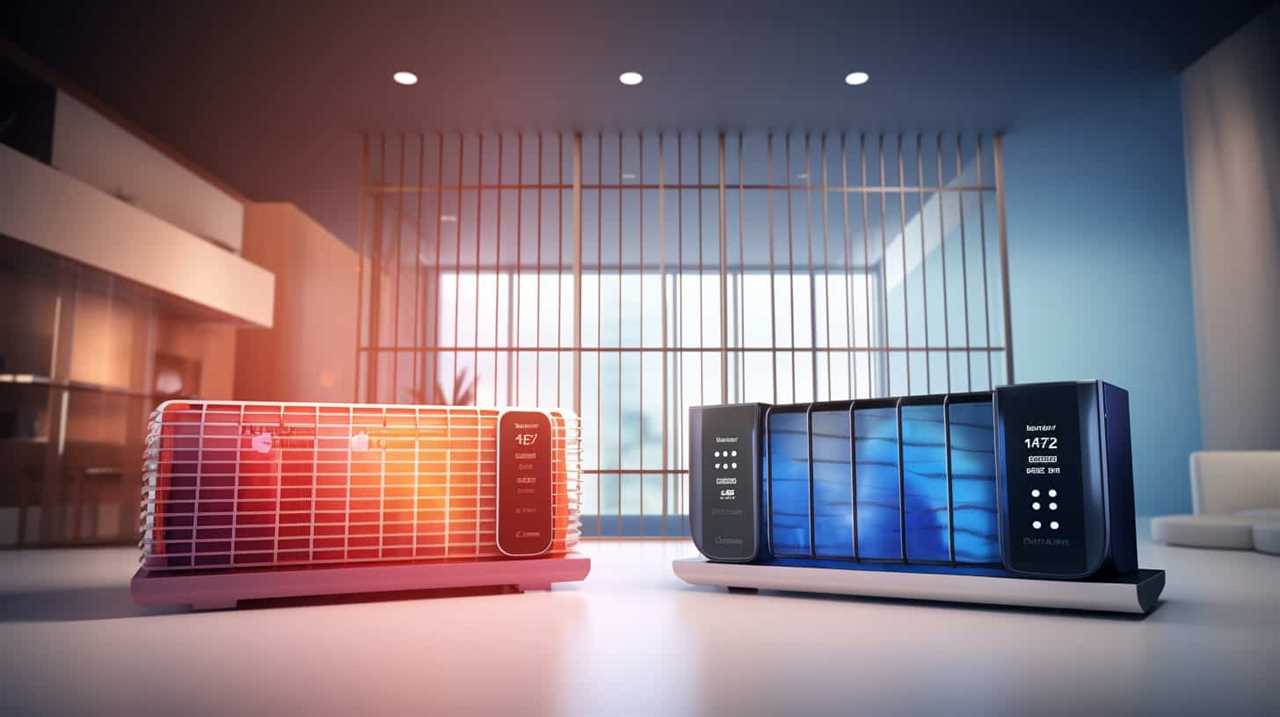
By understanding and optimizing the factors that affect efficiency, such as the choice of refrigerant, the design of the heat exchangers, and the control algorithms, we can unlock the full potential of heat pump systems.
Through careful analysis and continuous improvement, we can ensure that heat pumps operate at their highest efficiency levels, resulting in significant energy savings and environmental benefits.
Maximizing Energy Transfer Efficiency
How can we maximize the efficiency of heat pump energy transfers?
To increase energy transfer efficiency and maximize energy transfer effectiveness, there are several key strategies to consider:

-
Optimize insulation: Ensuring proper insulation of the heat pump system minimizes heat loss during transfer, maximizing overall efficiency.
-
Regular maintenance: Regular inspections and maintenance of the heat pump system help identify and resolve any issues that may hinder energy transfer efficiency.
-
Size the system correctly: Choosing the right-sized heat pump system for the specific application ensures optimal energy transfer and prevents unnecessary energy waste.
-
Utilize advanced control systems: Implementing advanced control systems allows for precise regulation of energy transfer processes, reducing energy consumption and improving efficiency.

Improving Heat Pump Performance
To improve the performance of heat pumps, it is crucial to explore the efficiency of energy transfers by examining factors such as insulation, maintenance, system size, and control systems. Improving heat pump efficiency is essential for enhancing energy transfer performance and reducing energy consumption. Insulation plays a critical role in preventing heat loss and ensuring that the transferred energy is used effectively. Regular maintenance, including cleaning filters and checking refrigerant levels, helps maintain optimal performance. Properly sizing the heat pump to match the heating or cooling load of the space is another key factor in improving efficiency. Lastly, advanced control systems can optimize the operation of the heat pump, ensuring it works at its highest efficiency levels. By addressing these factors, we can enhance the energy transfer performance of heat pumps and achieve significant energy savings.
| Factors to Consider | Importance |
|---|---|
| Insulation | High |
| Maintenance | Medium |
| System Size | High |
| Control Systems | Medium |
| Overall Performance | High |
In the next section, we will explore the various factors that influence heat pump energy transfers.
Factors That Influence Heat Pump Energy Transfers
During the operation of a heat pump, there are several factors that influence the efficiency of energy transfers. Understanding these factors is crucial for optimizing heat pump performance and achieving maximum energy efficiency. Here are four key factors that greatly impact the energy efficiency of heat pump systems:
-
Weather conditions: The external temperature and humidity levels play a significant role in determining the efficiency of heat pump energy transfers. Cold weather conditions can reduce the heat pump’s ability to extract heat from the environment, resulting in decreased efficiency.

-
Insulation: The quality and effectiveness of insulation in a building greatly affect the heat pump’s efficiency. Poor insulation can lead to heat loss, causing the heat pump to work harder and consume more energy.
-
Sizing and installation: Proper sizing and correct installation of heat pumps are essential for optimal energy transfers. Undersized or improperly installed heat pumps may struggle to meet the heating or cooling demands, leading to reduced energy efficiency.
-
Maintenance and regular servicing: Regular maintenance and servicing of heat pumps ensure optimal performance and energy efficiency. Neglecting maintenance can lead to decreased efficiency due to issues like clogged filters, refrigerant leaks, or faulty components.
The Role of Refrigerants in Heat Pump Energy Transfers
We frequently rely on refrigerants and their unique properties to facilitate efficient energy transfers in heat pump systems. Refrigerants play a crucial role in the overall performance and effectiveness of heat pumps. They’re responsible for absorbing heat from the source and releasing it into the desired space. The role of refrigerants is to undergo phase changes, transitioning from a low-pressure vapor to a high-pressure liquid and vice versa. This phase change allows refrigerants to efficiently transfer heat between different components of the heat pump system.
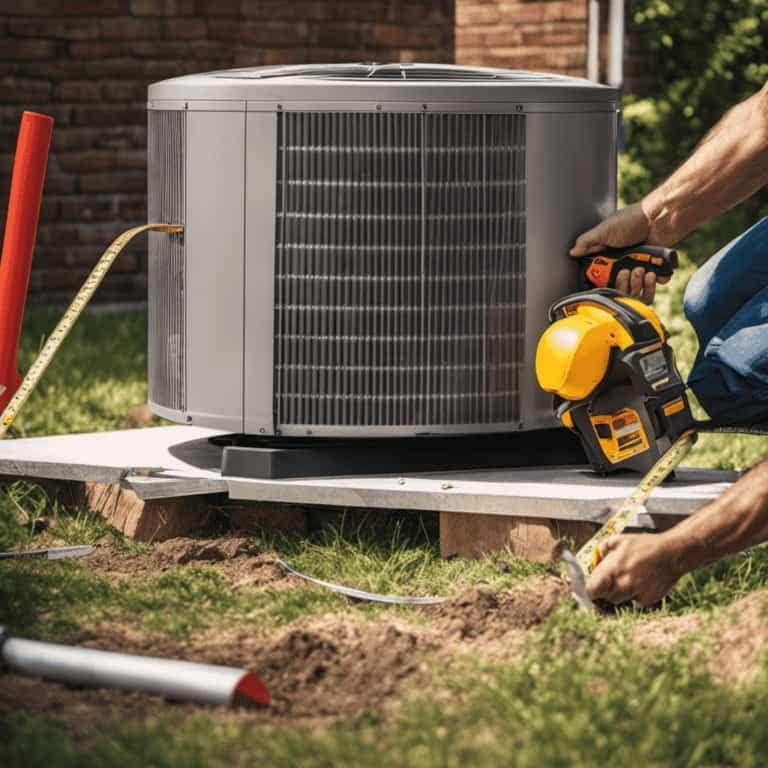
However, it’s important to consider the environmental impact of refrigerants. Some traditional refrigerants, such as chlorofluorocarbons (CFCs) and hydrochlorofluorocarbons (HCFCs), have been found to contribute to ozone depletion and global warming. As a result, there’s been a shift towards using more environmentally-friendly refrigerants, such as hydrofluorocarbons (HFCs) and natural refrigerants like carbon dioxide (CO2) and ammonia (NH3). These alternatives have lower global warming potential and are considered more sustainable options for heat pump systems.
Heat Pump Energy Transfer Modes: Heating and Cooling
When it comes to heat pump energy transfers, the two main modes are heating and cooling.
In the heating mode, the heat pump extracts heat from the outdoor air or ground and transfers it indoors to warm the space.
On the other hand, in the cooling mode, the heat pump removes heat from the indoor air and releases it outside, resulting in a cooling effect.

These dual-purpose energy transfer modes allow heat pumps to efficiently regulate temperatures in both heating and cooling seasons.
Efficient Temperature Regulation
Our goal is to achieve efficient temperature regulation by optimizing the heat pump’s energy transfer modes for both heating and cooling.
To improve system efficiency and provide smart temperature control, we can implement the following strategies:
-
Utilize variable speed technology: By adjusting the speed of the heat pump’s compressor and fan, we can match the energy output to the specific heating or cooling needs. This prevents unnecessary energy consumption and ensures optimal temperature regulation.

-
Implement intelligent control algorithms: By incorporating advanced control algorithms, we can analyze data such as outdoor temperature, humidity, and occupancy patterns to predict the desired indoor temperature. This allows the heat pump to proactively adjust its energy transfer modes, maximizing efficiency and comfort.
-
Optimize insulation and ventilation: Proper insulation helps minimize heat loss in the winter and heat gain in the summer, reducing the workload on the heat pump. Additionally, efficient ventilation systems allow for proper air circulation, ensuring consistent temperature distribution throughout the space.
-
Regular maintenance and system monitoring: By conducting routine maintenance and monitoring the heat pump’s performance, we can identify and address any issues that may impact its efficiency. This proactive approach helps maintain optimal temperature regulation while prolonging the lifespan of the system.
Dual-Purpose Energy Transfer
To achieve dual-purpose energy transfer in heat pumps, we can optimize the heating and cooling modes of operation. By implementing innovative energy transfer techniques, we can effectively regulate temperature and provide both heating and cooling capabilities.

One such technique is the use of a reversing valve, which allows the flow of refrigerant to be reversed, enabling the heat pump to switch between heating and cooling modes. Additionally, variable speed compressors and fans can be employed to optimize energy efficiency and provide precise temperature control.
These innovative technologies not only enhance the performance of heat pumps but also contribute to energy savings and reduced environmental impact. By harnessing the power of dual purpose energy transfer, we can serve our customers’ needs by providing efficient and versatile temperature regulation solutions.
Analyzing the Performance of Heat Pump Energy Transfers
Let’s analyze the performance of heat pump energy transfers to gain a better understanding of their efficiency and effectiveness. When evaluating the performance of heat pump energy transfers, there are several key factors to consider:
-
Coefficient of Performance (COP): This measure indicates the efficiency of the heat pump system in transferring energy. A higher COP value means that the system is more efficient in converting input energy into useful heat.
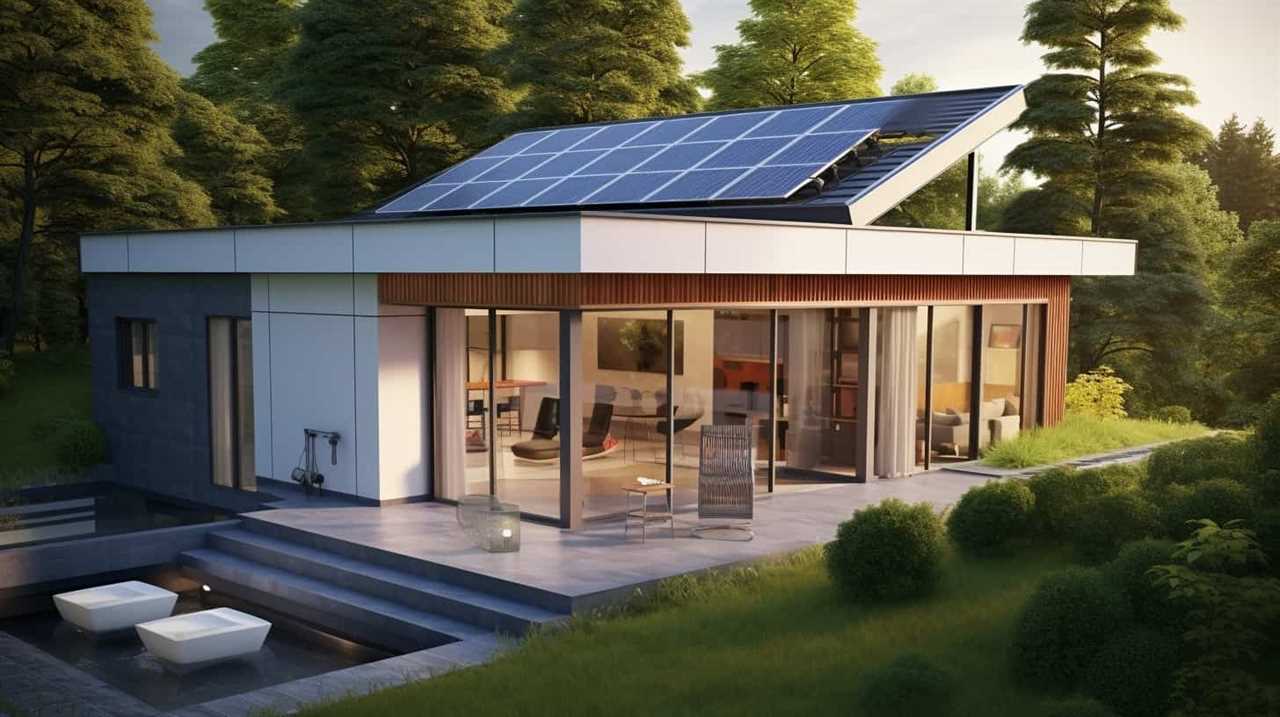
-
Energy Consumption: By analyzing the energy consumption of the heat pump system, we can determine its overall efficiency. Lower energy consumption indicates a more efficient system.
-
System Capacity: The heat pump’s ability to transfer energy effectively is reflected in its capacity. Evaluating the system’s capacity helps us understand its performance in meeting heating or cooling demands.
-
Heat Exchange Efficiency: The efficiency of the heat exchange process is crucial in determining the overall performance of the heat pump system. By analyzing the heat exchange efficiency, we can identify areas for improvement and optimize system performance.
Optimizing Heat Pump Energy Transfers for Maximum Efficiency
By examining key factors and implementing strategic improvements, we can optimize heat pump energy transfers for maximum efficiency. Maximizing heat pump efficiency is crucial in reducing energy consumption and minimizing environmental impact.

One important factor to consider is the selection of the right heat pump size for the specific heating or cooling needs of a building. Undersized heat pumps will struggle to meet the desired temperature, leading to reduced efficiency, while oversized heat pumps will cycle on and off frequently, wasting energy.
Additionally, optimizing energy transfer can be achieved by ensuring proper refrigerant charge and airflow. A well-maintained heat pump with clean filters and coils will operate more efficiently.
It’s also important to consider the location and insulation of the heat pump system, as heat loss or gain can significantly affect its efficiency.
Common Challenges in Heat Pump Energy Transfers
Despite advancements in heat pump technology, we still face common challenges in heat pump energy transfers that can hinder their efficiency and performance. These challenges include:
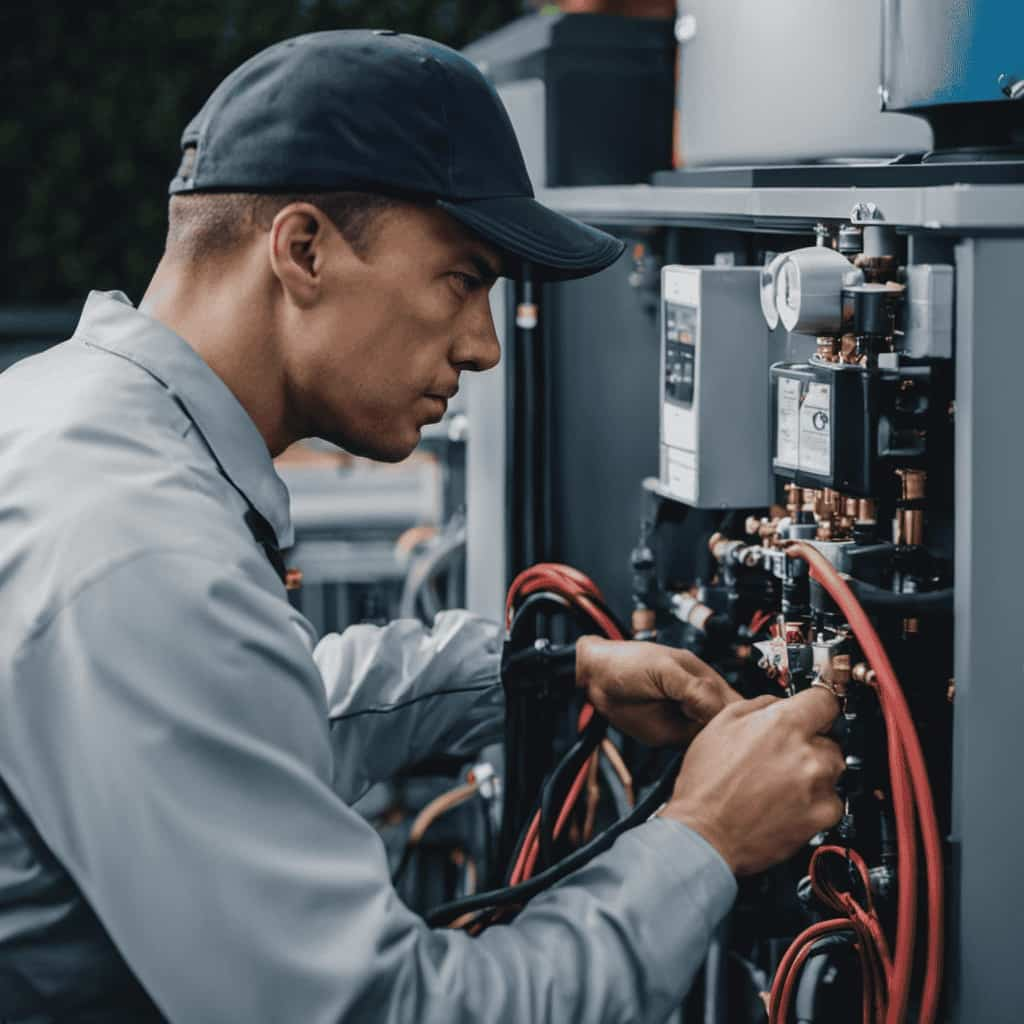
-
Insufficient heat exchange: One common challenge is the inadequate transfer of heat between the heat source (such as the ground or air) and the heat pump. This can be caused by factors such as poor insulation, mismatched equipment, or incorrect sizing.
-
Temperature fluctuations: Maintaining a consistent temperature output can be challenging, especially in extreme weather conditions. Heat pumps may struggle to extract sufficient heat from the environment when it’s extremely cold or provide adequate cooling when it’s excessively hot.
-
System inefficiencies: Heat pumps rely on various components, such as compressors and refrigerants, to transfer heat effectively. Issues with these components, such as compressor failure or refrigerant leaks, can significantly reduce energy transfer efficiency.
-
Limited capacity: Heat pumps have a specific capacity to transfer heat, and exceeding this capacity can lead to reduced efficiency. Oversized or undersized systems can result in energy wastage and decreased performance.

Despite these challenges, advancements in heat pump technology continue to address these issues and enhance energy transfer efficiency.
Advancements in Heat Pump Technology for Enhanced Energy Transfers
One of the key advancements in heat pump technology is the integration of variable speed compressors. By adjusting the speed of the compressor, heat pumps can optimize energy transfers to meet specific heating or cooling demands. This advancement has significant benefits in terms of energy efficiency and comfort.
Variable speed compressors enable heat pumps to operate at lower speeds when the demand for heating or cooling is low, resulting in reduced energy consumption. Additionally, the ability to modulate the compressor speed allows for smoother and more stable temperature control, eliminating temperature fluctuations and providing a more comfortable indoor environment.
Frequently Asked Questions
How Long Does It Take for a Heat Pump to Transfer Thermal Energy?
It depends on various factors, such as the heat pump efficiency and the conditions of the environment. Factors like temperature, humidity, and insulation can affect the speed at which thermal energy is transferred.

Can Heat Pump Energy Transfers Be Used in Large-Scale Industrial Applications?
Yes, heat pump energy transfers can be used in large-scale industrial applications. Implementing them requires cost considerations, but the environmental benefits make it a worthwhile investment.
Are There Any Safety Concerns Associated With Heat Pump Energy Transfers?
Safety precautions must be considered when using heat pump energy transfers. Potential hazards, such as refrigerant leaks or electrical malfunctions, can pose risks to both the environment and individuals. Proper maintenance and regular inspections help mitigate these concerns.
What Are the Different Types of Refrigerants Used in Heat Pump Energy Transfers?
There are different types of refrigerants used in heat pump energy transfers. These options have varying environmental impacts. It is important to consider the sustainability and efficiency of refrigerant choices in order to minimize harm to the environment.
How Can Heat Pump Energy Transfers Be Optimized for Different Climate Conditions?
To optimize heat pump energy transfers for different climate conditions, we focus on achieving optimal efficiency and cost-effective solutions. By analyzing climate data and adjusting system settings, we can ensure maximum performance and customer satisfaction.

Conclusion
In conclusion, understanding the secrets of heat pump energy transfers is crucial for optimizing their efficiency. By exploring the principles of thermal energy transfer and analyzing the performance of heat pumps, we can unlock their full potential.
Just like a well-oiled machine, a properly optimized heat pump can transfer energy with maximum efficiency, resulting in significant energy savings. It’s like finding the perfect balance between power and precision, ensuring that every transfer is smooth and seamless.


